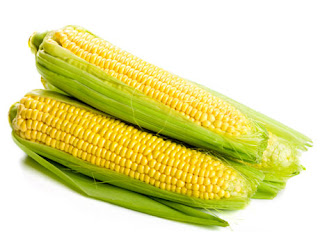There are more than forty species of the goji berry, also known as “wolfberry.” The more commonly consumed variety of goji berry is Lycium
barbarum. The berries, small and orange to light red in color, are filled with seeds. The taste is somewhat like a cross between a cranberry and a
cherry. They are shade-dried before packaging. Goji can be eaten raw, cooked, consumed as juice or wine, brewed into a tea, or prepared as a
tincture.
The goji plant hails from Tibet and Inner Mongolia and has a 3,000-year history in Chinese and Eastern medical traditions. The use of goji was first
described in the Chinese Materia Medica, published nearly 2,000 years ago.
barbarum. The berries, small and orange to light red in color, are filled with seeds. The taste is somewhat like a cross between a cranberry and a
cherry. They are shade-dried before packaging. Goji can be eaten raw, cooked, consumed as juice or wine, brewed into a tea, or prepared as a
tincture.
The goji plant hails from Tibet and Inner Mongolia and has a 3,000-year history in Chinese and Eastern medical traditions. The use of goji was first
described in the Chinese Materia Medica, published nearly 2,000 years ago.
Where Is Goji Grown?
The Chinese have been growing goji for thousands of years and the plant continues to be cultivated throughout China and Tibet. Ningxia, located in
northwest China along the Yellow River, is often referred to as the goji capital of the world. There is even an annual two-week festival to honor the
goji berry. It is also grown as a cultivated plant throughout Asia, the Middle East, Great Britain, and North America.
northwest China along the Yellow River, is often referred to as the goji capital of the world. There is even an annual two-week festival to honor the
goji berry. It is also grown as a cultivated plant throughout Asia, the Middle East, Great Britain, and North America.
Why Should I Eat Goji Berries?
Although goji contains a wide variety of nutrients and trace minerals, this berry is not especially rich in any one vitamin or mineral. However, its
concentration of the plant chemicals beta-carotene and zeaxanthin more than makes up for any shortfall in nutrient density.
concentration of the plant chemicals beta-carotene and zeaxanthin more than makes up for any shortfall in nutrient density.
Home Remedies
Whatever ails you! Goji has been used to treat inflammations, skin irritations, nosebleeds, and aches and pains. In Chinese medicine, goji is
recommended for long life, sharp eyesight, and healthy liver function, to boost sperm production, and to improve circulation, among other benefits.
recommended for long life, sharp eyesight, and healthy liver function, to boost sperm production, and to improve circulation, among other benefits.
Lifesaver!
HEART HEALTH: Goji fruit extracts significantly reduced blood glucose, total cholesterol, and triglycerides, and at same time markedly
increased high-density lipoprotein (“good”) cholesterol levels after rabbits consumed them for ten days.
INSULIN RESISTANCE: Diabetic rats who were treated with goji for three weeks had significant decreases in triglycerides, weight, and
cholesterol, and had improved insulin sensitivity.
CANCER: An extract of goji stopped the spread and encouraged death of liver cancer cells in a cell study. Another cell study showed that goji
inhibited leukemia cancer cells, and a mouse study showed that goji enhanced the killing effect of radiation therapy.
Tips on Using Goji Berries
SELECTION AND STORAGE:
• Goji can be purchased at Chinese supermarkets and herb shops and health food stores.
• Goji berries are processed into a variety of other forms including juice, powdered, and dried.
• Store in a cool, dry place.
• Goji berries are processed into a variety of other forms including juice, powdered, and dried.
• Store in a cool, dry place.
PREPARATION AND SERVING SUGGESTIONS:
• Goji berries can be eaten right off of the vine!
• Wash and then soak dried goji berries for fifteen minutes before eating.
• Dried goji berries can be eaten alone as a snack food or as a great addition to a trail mix.
• Throw a handful of berries into a smoothie.
• Top off hot or cold cereals, stews, or baked goods and cereal bars with some berries.
• Wash and then soak dried goji berries for fifteen minutes before eating.
• Dried goji berries can be eaten alone as a snack food or as a great addition to a trail mix.
• Throw a handful of berries into a smoothie.
• Top off hot or cold cereals, stews, or baked goods and cereal bars with some berries.































